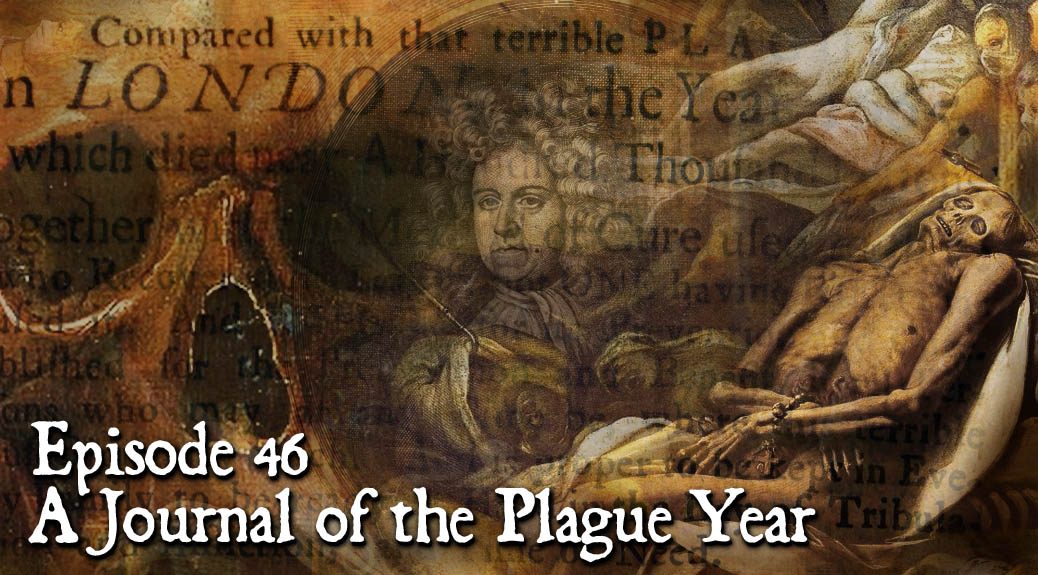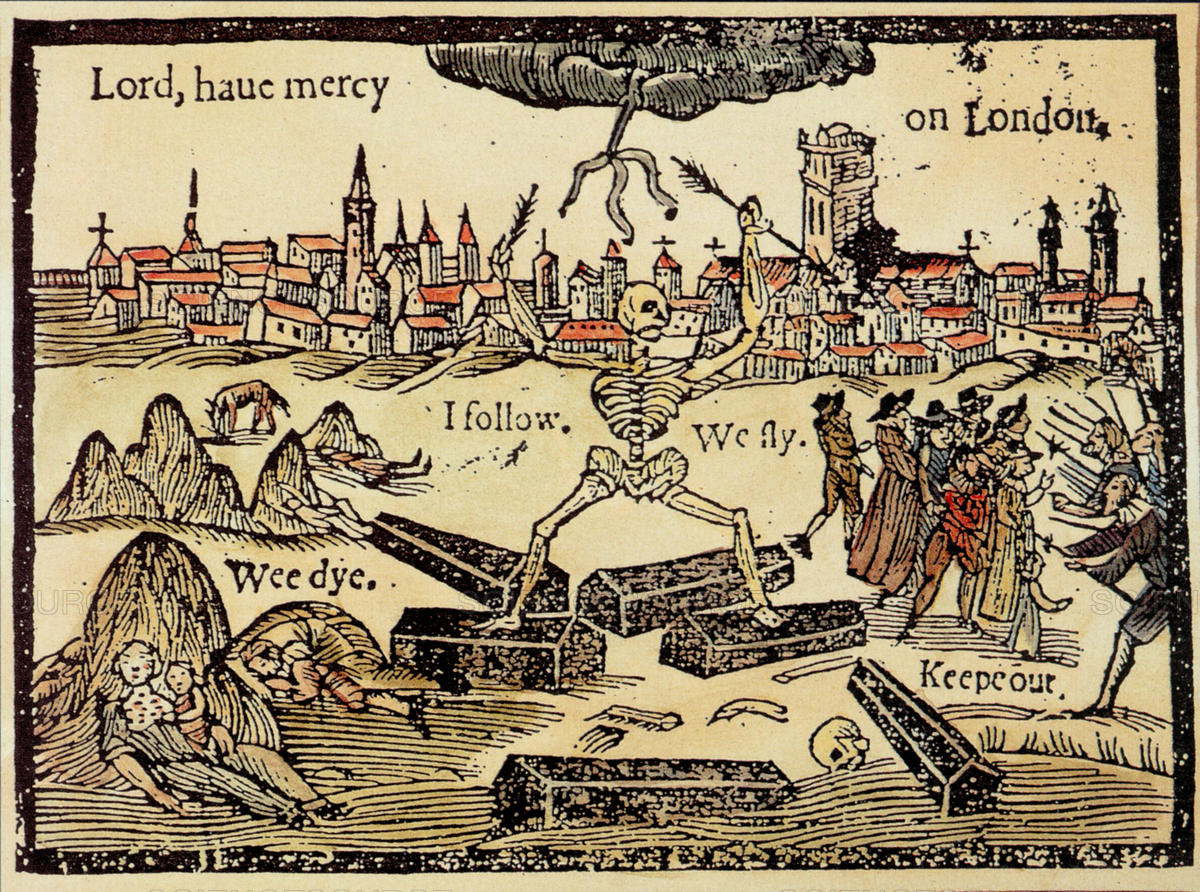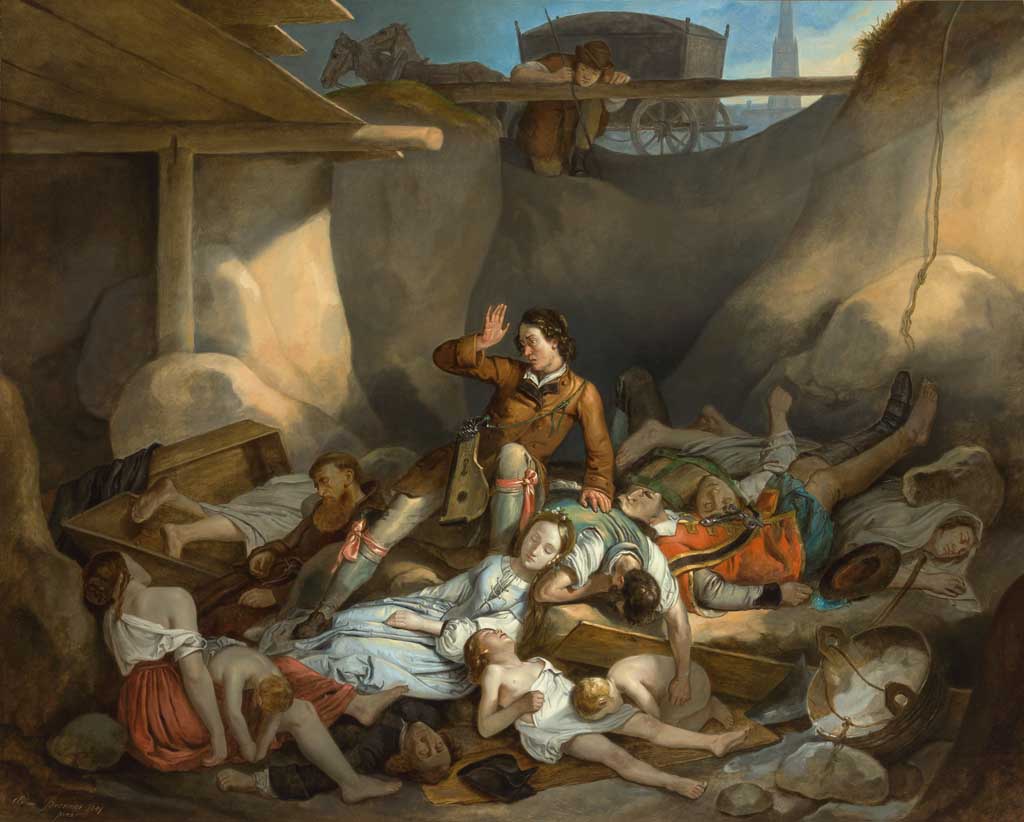
A Journal of the Plague Year
Podcast: Play in new window | Download (Duration: 44:39 — 51.1MB)
Subscribe: Apple Podcasts | Spotify | Android | Podchaser | RSS | More
The Great Plague of London of 1665 to 1666 is vividly portrayed in Daniel Defoe’s A Journal of the Plague Year, which we’ll be examining closely in this episode. As the text is quite entertaining (much more so than his better known Robison Crusoe) we’ll be hearing more extensive quotes from the material than usual, delivered as usual by our diligent reader Mrs. Karswell.
We begin with a look at the presumed connection between the nursery rhyme, “Ring Around the Rosie” and the Black Death. Though the facts here may not satisfy our desire for macabre secrets hidden in plain sight, we will find evidence for something similar in a children’s song we review at the show’s conclusion. We hear a snippet of the song as rendered in the game Dead Space.
Defoe’s book occupies a strange place between history and historical fiction. As Defoe was 5 years old in 1655 and the book was published in 1722, the story is technically a work of fiction. However, the narrative is an excellent window into contemporary perceptions of the tragedy as well as treasure house of factual information. Characters within the story are nearly all actual individuals. Particular events described have widely been corroborated in contemporaneous accounts. Particular dates and locations are also meticulously anchored in reality – so much so, that scholars have frequently treated it as a contemporaneous source. Hints given in the text suggest that Defoe was in fact telling the story of his uncle, Henry Foe, who lived through the Great Plague in London and shared a profession (saddler) with the story’s narrator.

Part of what makes the book so fascinating is Defoe’s meticulous cataloging of the way in which Londoners reacted to (and anticipated) the plague in terms of omens and astrological predictions and biblical prophecies articulated in pamphlets, broadsheets, and almanacs of the day. Here, the sighting of two comets over England as well as the biblical and numeric significance of the approaching year 1666 play a large role. He also describes predictions of doom were also shared by visionaries and eccentric personalities on the city’s streets, such as those shared by the Quaker Solomon Eccles, known to Londoners as “Solomon Eagle,” a self-styled prophet who roamed the city with a pot of burning coals atop his head.

Defoe’s narrative also relishes some detail on the symptoms of the disease, the madness it brought upon those suffering from these symptoms, and the dreadful treatments offered by contemporary doctors. We hear a number of passages describing these aspects, including horrific accounts of patient suicides and a lethal kiss offered by an insane victim of the sickness.
Also included in A Journal are extensive quotes from municipal edicts stipulating how the emergency was to be addressed. From these descriptions we learn of the “Searchers of the Dead,” old women who roamed the city with red wands, prodding at corpses to determine which had succumbed to the disease, and of the watchmen posted at the doors of quarantined homes to ensure that those within (sick and healthy residents alike) remained incarcerated until the afflicted either recovered or was carted to the plague pits. We also hear how these measures were defeated by more devious citizens.
Corpses, which were placed outside homes (or later those that simply fell dead in the streets), were picked up by “dead carts” preceded by a bell ringer. Pickups and burial in the plague pits were only performed at night to avoid further distressing the citizenry. He hear a particularly dramatic description of the narrator’s visit to one of these pits and an encounter with a grieving loved one there and his rough treatment by cynical drunkards in a tavern to which he retreats.
Unfortunately for Londoner’s the Great Plague was followed by the Great Fire of London in 1666. While the death count from the plague had already begun to drop sometime before the fire, it was nonetheless commonly believed that this disaster somehow put an end to the epidemic or even, in some way, purified the city of its sickness. We hear a clip of the song “London’s Burning,” commonly associated with the 1666 fire despite its mentioning anachronistic “engines” sent to extinguish the flames.
Defoe’s Journal also includes another story related to a song. It’s his retelling of a legend circulating in London at the time inspired by a story from Vienna. It relates how a piper, a tavern entertainer, becomes grievously intoxicated and while passed out, is picked up by one of the dead carts and is deposited, while still unconscious, in a plague pit — thankfully awakening before earth is shoveled in. The story was eventually turned into the Viennese song “Oh du lieber Augustin,” (Oh, my dear Augustine) in the 1800s, and attributed to Markus Augustin, a minstrel and piper, who lived through the Great Plague of Vienna in 1679. While it’s set to the innocent-sounding melody of “Have You Ever Seen a Lassie,” the grim lyric tells how the piper has lost everything to the plague, like the city of Vienna itself. But its cheery tune and the fact that the singer has lived to tell his story has made it an anthem of survival for the city — and popular song throughout German-speaking lands. We hear a snippet of the song rendered in period-appropriate style by Ensemble Unisonos.
We end the show with a custom mashup of “Oh du lieber Augustin” and the curiously similar dead-cart scene from Monty Python and the Holy Grail.
